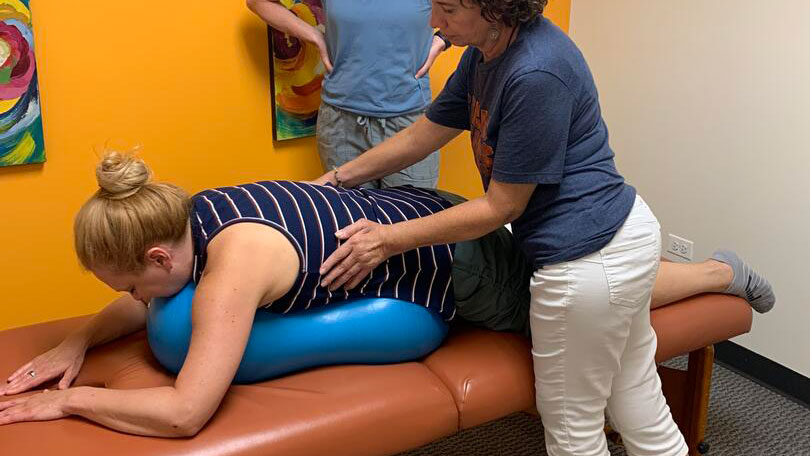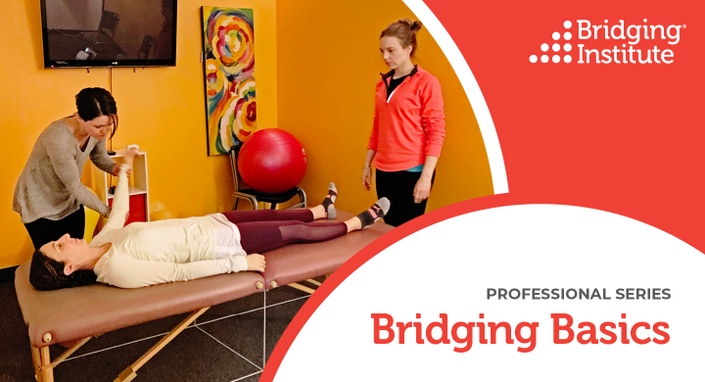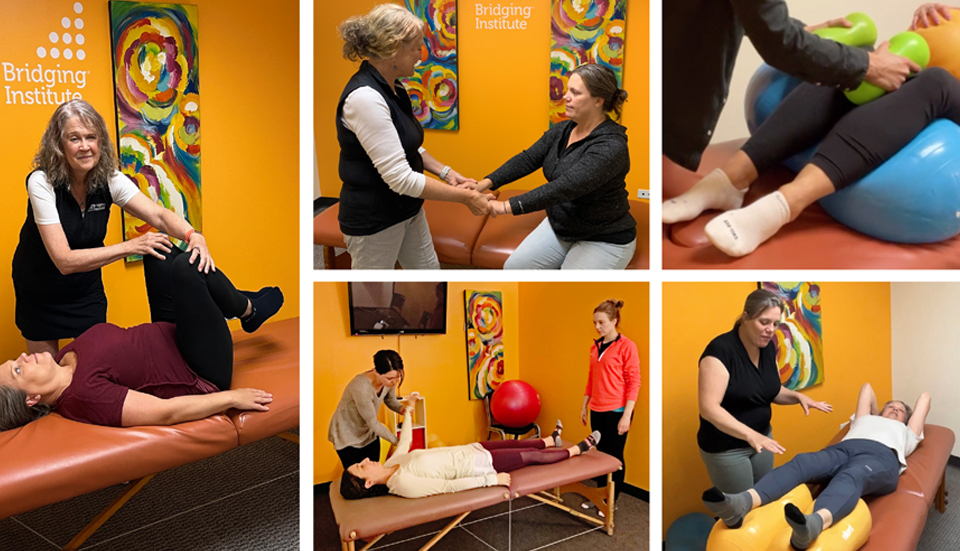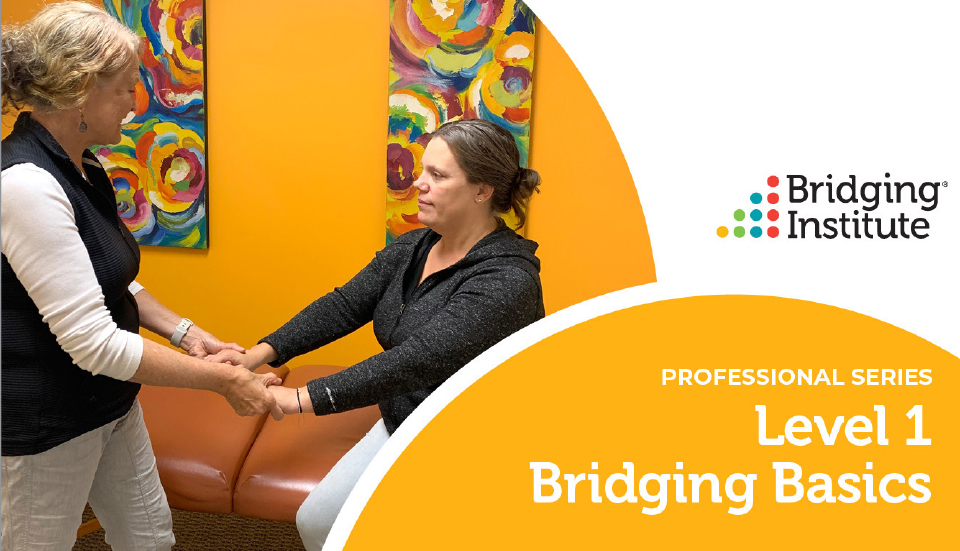For Professionals
How can Bridging help my clients/patients?
Looking for new options to help your patients or clients with pain, balance, calm, and even with learning motor skills? Bridging is a new option for you to consider.
Why should you consider adding Bridging to your practice?
The three aspects of the Bridging process which set it apart from traditional medical perspectives on pain, movement ability, and self-regulation are:
Assessing...
...micromovent flows and transitions in the body. When these foundational basics of movement are stuck or asymmetrical there is often pain, poor movement control and sensory feedback imbalance.
Analyzing...
...why the movements may be suboptimal. A lifelong view of injuries, illness, medical intervention, and birth/early life are all factors which are taken into account.
Resetting...
...muscle memory to quickly and gently restore movement ease, and the postural transitions needed for easy and balanced movement.

There are two ways to add Bridging to your patient/client work:
Learn to do the Bridging Technique yourself
Refer your patients and we can work in tandem to bring faster/greater results.
How to be more engaged with Bridging?
Step 1
Learn what makes Bridging uniquely effective by watching case studies and explanations on our YouTube channel.
Step 2
Learn the full process and application with monthly video and case study discussions, and quarterly advanced skills workshops. An annual retreat is in the works for the future!
Step 3
Be involved in our professional community with monthly video and case study discussions, and quarterly advanced skills workshops, all of which count toward a Specialist Certification.
How do you learn to do Bridging?
In-person and online educational options allow you to learn at your own pace, have a support
community, and review material when you need a refresher.
- Bridging Courses- Level 1, 2, 3 (each course includes online lessons, a series of 3 Saturday workshops once per month, and follow-up discussion mid-month).
- Certification- additional practice, case studies and coursework concluding with a written and practical exam.
- Advanced Topics and on-going quarterly skill-building workshops.
- Community discussions monthly, online discussion forum, and annual retreat.
Bridging education incorporates adult learning best practices in the following ways:
- Mini-lessons online: Background and theoretical information is presented as mini-lessons online using the online portal, Teachable. Each lesson is approximately 5 minutes long. This makes learning highly effective, yet adaptable to your schedule. You can also review lessons and concepts at any point in time.
- Observe, do, coach, and experience are the four learning modes for Bridging workshops. Whatever your learning style, there is a segment for you!
- Workshops: These are a mixed format of virtual and in-person options, and recordings are posted from each segment. The lessons are pre-recorded so you can watch and try out the concepts ahead of time. The workshop day is filled with case studies and practice. The confidence you gain, and range of case studies is amazing!
- Cohort discussions monthly. This helps you to build confidence by answering questions with your practical applications.
Training Options

Bridging Basics-2025
Transform your professional skills by learning the Bridging assessment and reset process to better help patient/clients!
Student Testimonials
I was able to start using what I was learning and get results immediately!”
I’m able to use Bridging with complex patients who otherwise don’t have a clear treatment path. The problem-solving helps to guide the way. As a treatment starting point, Bridging provides a way to organize and calm movement, allowing for more detailed assessment.”
The technique is not about forcing movement or solutions. You can help pain and stress in a way that gets instantaneous changes. Clients leave feeling and functioning better! It’s easier on you as a partitioner and a more complete solution.”
Bridging was something that felt complimentary/adjacent to other skills. (Fitness, functional fitness, somatic movement, reiki, somatic breathing). Bridging seemed like a hands-on version to add to the somatic work.”
Find Us
- Park at the rear/west entrance
- Enter the building and turn to the right
- Proceed to the end of the hallway. That’s it!


